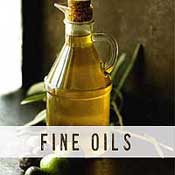Cera Alba (Raw Beeswax) With Increased Levels of Propolis and Pollen
Morning Song Gardens only uses locally sourced, and organically treated raw beeswax. Although more expensive, these measures ensure the best apitherapy [Def. 1] results for skin. A 2002 study from the Journal of Alternative and Complementary Medicine found that propolis may promote the healing of minor burns. [12] The researchers compared a propolis skin cream with silver sulfadiazine, a drug used to treat burns. Study results showed propolis was just as effective as the drug in treating second-degree burns. Propolis has a wide range of antibacterial properties. [ibid] It is also has anti-fungal and anti-viral powers. In one animal study, applying a propolis solution to wounds helped speed healing in rats. [13]
Pollen helps improve blood circulation in the vessels, and it moistens the skin. The anti-inflammatory and analgesic action of flavonoids in bee pollen helps relieve pain and prevent platelet aggregation. Pollen also helps prevent infection because of its antimicrobial activity, allowing a wound or burn to heal quickly. [14]
[Def. 1] Apitherapy (n.d.). The use of products derived from bees as medicine, including venom, honey, pollen, propolis and royal jelly. Merriam-Webster Online. In Merriam-Webster. Retrieved January 2, 2017, from http://www.merriam-webster.com/dictionary
Apitherapy is becoming more and more recognized among contemporary and conventional treatment methods as it uses therapeutic effect of standardized, pharmacologically active fractions obtained from bee products. Literary data indicate that the antioxidating, immunomodulating, epithelialization accelerating properties and bacteriostatic and anesthetic characteristics and the advisability of its application in burn wound treatment are confirmed. [15, 16] Furthermore, the equally important fact is that pollen has a strong anti-inflammatory effect, shortens the healing time, decreases the discomfort of both the duration period and the intensity of ailments, and is definitely less costly. The mechanism of the inflammatory effect is about inhibiting the activity of enzymes which are responsible for the development of inflammatory process mediators in tissues. Flavonoids and phenolic acids are mainly responsible for such actions, but fatty acids and phytosterols also take part in this process. [17, 18]
What is more, kaempferol, which is included in pollen, thanks to its ability to inhibit the activity of two enzymes: hyaluronidase, which is the enzyme catalyzing depolymerisation of hyaluronic acid, and elastase, which hydrolyses elastin, strengthens the connective tissue and seals blood vessels. This results in decreased transudates, inflammatory reactions, and swellings. Blood circulations in the vessels improve and, therefore, skin becomes moistened and tight. The antiedematous, anti-inflammatory, and analgesic action of flavonoids may also result from a different compound bioactivity; for example, quercetin, by inhibiting the activity of histidine decarboxylase, lowers the histamine level in the organism. Moreover, inhibiting the cascade of arachidonic acid metabolism, which in turn lowers the level of proinflammatory prostaglandins and gives the anti-inflammatory effect, removes local pain and prevents platelet aggregation. [19]
It should also be mentioned that one of the factors interrupting the healing process of wounds is infection. Particularly susceptible to infections are post-burn wounds, which were the subject of previous studies on experimental therapy of burns with propolis. Extensive burns are the gates of infection for many microorganisms, while the necrotic tissues are a very good environment for such microorganisms to develop. [ibid] The therapeutic mechanism of apitherapeutics is based, among others, on antimicrobial activity and on inducing processes of regeneration of damaged tissues. These properties indicate the possibility of using apitherapeutics in burn wound treatment and ulcerations of different etiology. [20] The conducted studies, that have not been published yet, prove that the ointment with bee pollen extract has an antimicrobial activity regarding the bacterial flora of post-burn wounds. Moreover, the apitherapeutic method of burn wound treatment, including topical application of the bee pollen ointment, is additionally deprived of undesirable effects and is alternative to topical burn wound treatment.
[Back to Top Menu]
|



